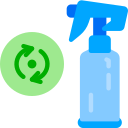Proving Performance at Home
Hard water can leave film and reduce cleaning power. Start with label directions, then adjust dilution. Pair plant-based cleaners with microfiber for mechanical lift, and pre-soak tough messes to reduce scrubbing and waste.
Proving Performance at Home
When a tomato sauce spill hit our cotton tablecloth, an oxygen booster soak and cool-water rinse beat chlorine hands-down. Share your own victories or struggles in the comments so we can troubleshoot together.




